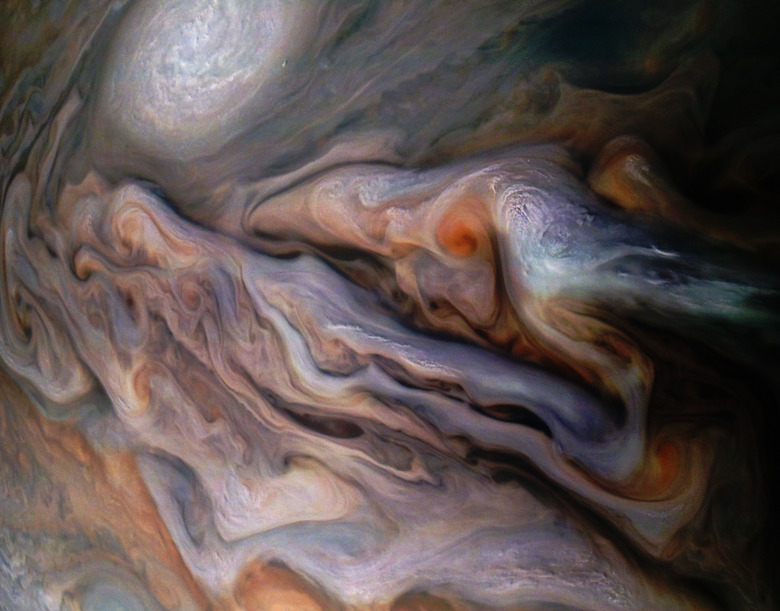Scientists Get Sneak Peek At The Core Of A Gas Giant
- The remains of a gas giant were spotted orbiting a nearby star, astronomers reveal.
- The core of the planet is all that remains, but researchers think it was once a massive gaseous planet.
- What lies deep within gas giant planets has long been a mystery for astronomers.
Gas giant planets like Jupiter are incredibly interesting objects. They're also quite mysterious, as nobody really knows what is lurking deep within the miles of gas that makes up their thick atmospheres. For example, it's thought that there's some kind of a rocky core within Jupiter, but beyond that, researchers can't say what features it has, how large it is, or even begin to guess what it looks like.
Our best shot at seeing the core of a gas giant may be to spot a planet's core that has already been burned off by a nearby star. That's exactly what researchers from the University of Warwick have done, and the planet — called TOI 849 b — is a burned-up husk of what may have once been a mighty hot Jupiter.
Hot Jupiter planets are gas giants that orbit particularly close to their host stars. They've been spotted by exoplanet survey projects, but nobody really knows what the future holds for them. Do they move outward to more comfortable distances, as some scientiss believe was the case with Jupiter, or remain close to their star and slowly burn away, which is what appears to have happened to TOI 849 b?
In their paper published in the journal Nature, the researchers explain how the rocky planet core — which is roughly the size of Neptune — may have once been a gas giant. One of the other possibilities, the scientists suggest, is that the planet is a failed gas giant which couldn't muster enough gas to form the characteristic huge balloon that hot Jupiters are known for.
The last possibility that the researchers suggest is that the core is what remains of a gas giant planets that collided with another huge object. Such an impact would have greatly disrupted the planet and potentially sent its wealth of gas flying elsewhere.
"The planet could have been a gas giant before undergoing extreme mass loss via thermal self-disruption or giant planet collisions, or it could have avoided substantial gas accretion, perhaps through gap opening or late formation," the researchers write. "Although photoevaporation rates cannot account for the mass loss required to reduce a Jupiter-like gas giant, they can remove a small (a few Earth masses) hydrogen and helium envelope on timescales of several billion years, implying that any remaining atmosphere on TOI-849b is likely to be enriched by water or other volatiles from the planetary interior. We conclude that TOI-849b is the remnant core of a giant planet."
It's pretty exciting, but there's a bit of a downside. The planet — or what's left of it — sits 730 light-years from Earth. That's not a huge distance, cosmically speaking, but it's far enough that researchers can't really get a good look at it. They can estimate its size and mass, but that's about it.
